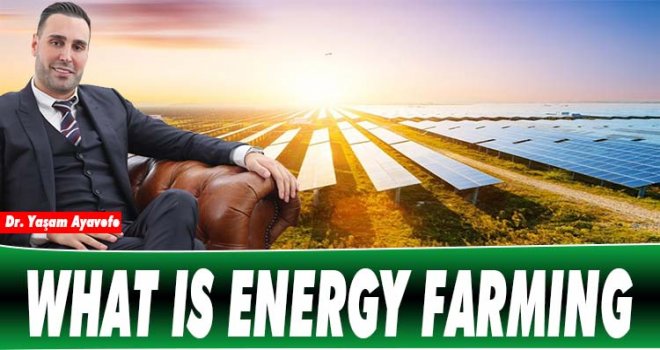WHAT IS ENERGY FARMING

From renewable energies to eco-materials, farmers' actions reflect the expansion of agricultural multifunctionality and increase activities in the region.
At the heart of the reflection lie the concepts of externality and even the environmental services provided by agriculture.
Several issues related to agricultural energy sources are interrelated:
- Mobilizing existing potential, including small deposits;
- Avoid capturing local resources for the benefit of industries.
Multi-partner dynamics such as the anchoring of the activity to the region and those carried out in the Collective Interest Cooperative are renewing rural cooperation involving farmers.
Even if they build their projects on a country-to-departmental scale, development models support the closest link between production and consumption.
It never exceeds 30 km between the storage platform and the collection and delivery area. Anchoring in the area provides a real adaptability to customer requests.
It results from the combination of a multidimensional, multi-purpose approach from energy generation to the provision of localized services and the creation of regional multi-partnerships.
Formerly considered waste, hedge wood is activated as a resource thanks to the technical adoption of wood chipping. Social integration through employment is also one of the priorities.

In this case, energy is only one aspect of his passion for a more global landscape management and maintenance, carbon storage, biodiversity, social bonds.
Environmental and landscape works are valued at a producer price, subject to completion of some form of payment management plans for environmental service.
Finally, these projects are very collaborative through collective and localized learning dynamics between farmers, artisans, local governments, individuals, associations, industrialists and foresters. Local technical dependence is regulated, from chopped wood to the boiler and the heating network.
The willingness of customers to pay for a higher-than-market price takes into account the multiplicity of services provided to the region.
However, those dealing with a very localized and dispersed resource have a modest volume of activity of between 3,000 and 5,000 tones per year and public procurement law does not necessarily support them.
These approaches have not yet fulfilled all their promises, especially in terms of environmental regulation and environmental common services.
Although stimulating, they are still underrepresented. Most energy initiatives in agriculture are at best the result of individual choices by small farming collectives.
However, wood logs remain the leading renewable energy fuel in the West. The wood energy plan has tripled the installation of automatic wood fired boilers on farms since 1996.
Wood shavings, which represents only 20,000 of the 420,000 tons of sawdust volume consumed, mainly supplies the local, rural and agricultural sectors.
At the same time, although agricultural productivity was well developed in the West, it gave rise to counter-patterns driven by the density of cooperative networks so prevalent since the 1960s that the habit of working in groups was so common. He took an active part in the promotion of energy-related information and techniques in agriculture.

Beyond that, the Sustainable Agriculture Network supports autonomous and sustainable alternative farming approaches that integrate energy reflection.
Initiatives related to local energies, renewable building materials (hemp) and transported food chains are concentrated in the West.
Within this network, the reflection on the energy efficiency of agricultural systems, sectors and regions became tangible.
Three initiatives have been proposed:
- sustainable and economical farming systems
- local renewable energy sectors and
- local animal feed production.
The production of renewable energies on the farm is subject to various public actions.
Agricultural policy has promoted energy production. He emphasized the possibilities of non-food development of agricultural products such as agricultural biomass, agricultural fuels, wood energy.
An agricultural biogas scheme was initiated and self-consumption of pure on-farm vegetable oil was allowed.
While the Agricultural Modernization Act is more defensive about energy for fear of land grabs, it still reaffirms the place of methanation as an agricultural activity where at least 50% of incoming materials come from farms.
The law of the agricultural future encourages actions towards energy sourcing and an ecological cause.
Dr.Yaşam Ayavefe
-
 Arıklı, TEL-SEN’in yeni yönetimini kabulde önemli açıklamalarda bulundu..
Arıklı, TEL-SEN’in yeni yönetimini kabulde önemli açıklamalarda bulundu..
-
 Trump: ''Gelecek hafta İran'la görüşeceğiz''
Trump: ''Gelecek hafta İran'la görüşeceğiz''
-
 Türkiye Cumhurbaşkanı Erdoğan: Macron ile Kıbrıs'ı konuştuk
Türkiye Cumhurbaşkanı Erdoğan: Macron ile Kıbrıs'ı konuştuk
-
 Rum Yönetimi, Cumhurbaşkanı Ersin Tatar'ın BM'ye mektubuna cevap verdi: Türkiye ..
Rum Yönetimi, Cumhurbaşkanı Ersin Tatar'ın BM'ye mektubuna cevap verdi: Türkiye ..
-
 Erhan Arıklı: Ankara Kule hava sahamıza destek verdi, çarpıtmalara gülüyoruz..
Erhan Arıklı: Ankara Kule hava sahamıza destek verdi, çarpıtmalara gülüyoruz..
-
 Askerlik (değişiklik) Yasa Önerisi komiteden geçti
Askerlik (değişiklik) Yasa Önerisi komiteden geçti
-
 Üstel, Yuvaya Dönüş Paketini duyurdu: Sosyal konut, bedelli askerlik ve birçok p..
Üstel, Yuvaya Dönüş Paketini duyurdu: Sosyal konut, bedelli askerlik ve birçok p..







